
Arts and Crafts Can Significantly Aid in Recovery for Scam Victims
Hands That Heal: How Arts and Crafts Support Scam Victim Recovery
Primary Category: Scam Victim Recovery Psychology
Authors:
• Vianey Gonzalez B.Sc(Psych) – Licensed Psychologist, Specialty in Crime Victim Trauma Therapy, Neuropsychologist, Certified Deception Professional, Psychology Advisory Panel & Director of the Society of Citizens Against Relationship Scams Inc.
• Tim McGuinness, Ph.D., DFin, MCPO, MAnth – Anthropologist, Scientist, Polymath, Director of the Society of Citizens Against Relationship Scams Inc.
About This Article
Creative, hands-on activities provide scam victims with a powerful way to recover from betrayal trauma. When you work with your hands, you help stabilize your nervous system, calm intrusive thoughts, and rebuild cognitive strength. Crafts create a healing process that moves at your pace. In the early months, simple, repetitive tasks like gardening, coloring, or knitting offer comfort without overwhelm. As your recovery continues, creative projects like pottery, painting, or LEGO building help you reconnect with identity and expression. By the one-year mark, cognitive-based activities like model kits, puzzles, or structured learning strengthen focus and decision-making. Each stage of crafting supports different layers of healing. You shift from emotional shock into personal empowerment. Crafts help you stop replaying the trauma and start creating new experiences. This approach is not about art. It is about active recovery, resilience, and emotional self-care. Working with your hands allows you to heal in small, manageable steps without forcing emotional overload. You build new patterns of trust—one project at a time.
Note: This article is intended for informational purposes and does not replace professional medical advice. If you are experiencing distress, please consult a qualified mental health professional.
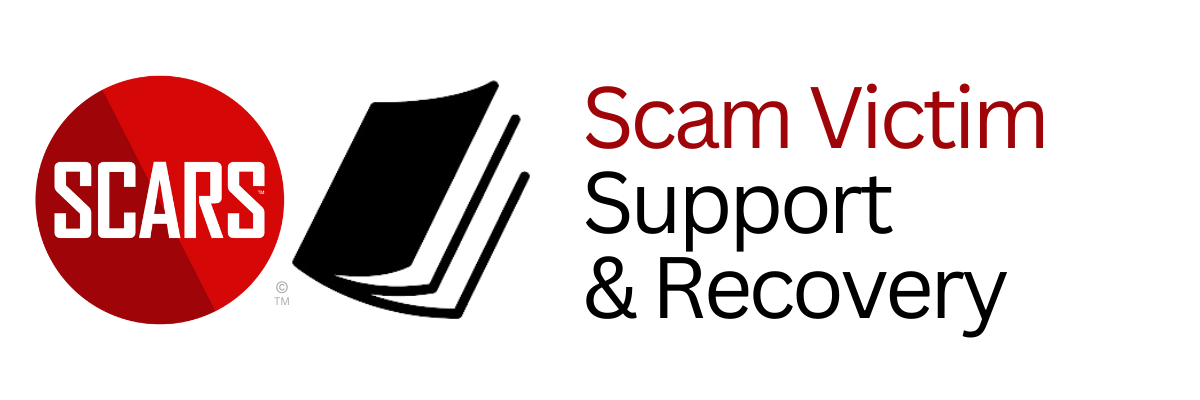
Hands That Heal: How Arts and Crafts Support Scam Victim Recovery
Trauma Recovery Requires Active Participation
When you become a victim of a scam, the emotional damage goes far beyond losing money, but Arts and Crafts and significantly help in your recovery.
Scam victimization creates betrayal trauma, which cuts directly into your sense of identity, safety, and trust in the world. It often leaves you stuck in prolonged emotional distress. You may find yourself trapped in cognitive dissonance, trying to reconcile how you could have fallen for the scam with the belief that you are normally careful or intelligent. This conflict creates confusion and self-blame. Scam trauma also triggers cognitive dysfunction in the way your brain processes information. You may experience frequent emotional flashbacks, brain fog, and difficulty learning new things. Emotional numbness is also common. You may feel detached from your previous interests, unable to find joy in activities you once loved.
Trauma affects both your mind and your body. It often leaves you caught in cycles of hyperarousal, where your nervous system feels constantly on edge. You might experience intrusive thoughts that replay the scam repeatedly, leaving you exhausted but unable to shut your mind off. At the same time, you may shift into emotional shutdown or dissociation, where you feel nothing at all. Many scam victims isolate themselves during this phase, avoiding social interaction because of shame or fear of judgment.
One of the most effective ways to begin emotional regulation after trauma is through hands-on creative activity. This does not mean producing complicated artwork or taking on big projects. Right after a scam, your mind may not be capable of complex creativity. That is normal. You may find that your attention span, memory, and decision-making skills feel weakened for a time. Trying to force advanced thinking usually leads to frustration.
Working with your hands creates a different path forward. Simple, repetitive tasks calm the nervous system and give your mind something to focus on besides intrusive thoughts. Hands-on crafts provide structure when life feels chaotic. They create gentle mental engagement without the pressure of perfection or performance. This makes them an ideal tool for the disorganized and painful early stages of recovery.
The Psychological Theory Behind Arts and Crafts for Trauma Recovery
Trauma changes how your body and mind operate. After a scam, your nervous system may stay stuck in survival mode long after the threat is gone. Arts and crafts provide a hands-on way to shift out of that constant state of overwhelm. They give you small, manageable tasks that help rewire your nervous system and rebuild your emotional stability. This is not just a hobby; it is a therapeutic practice backed by trauma psychology, neuroscience, and behavioral health research.
The Role of Somatic Regulation
When you experience betrayal trauma from a scam, your autonomic nervous system responds as if your life is in danger. You might stay locked in one of four states: fight, flight, freeze, or fawn (there are more responses, but for this, these four are all that matter.) These responses are not mental choices. They are automatic reactions designed for survival. However, when the trauma is psychological and emotional instead of physical, these survival responses can become stuck. You may feel like you are constantly on edge, unable to relax. You might feel paralyzed by indecision or collapse into emotional shutdown. Sometimes you find yourself agreeing with people or saying yes to things because you cannot tolerate confrontation or rejection. This is called fawning.
Arts and crafts help regulate these survival responses by bringing your nervous system back into balance. Repetitive hand movements, such as knitting, crocheting, carving, or sewing, create a predictable rhythm. This rhythm soothes your mind and body. It anchors your attention to the present moment and slows your heart rate. Your breathing deepens naturally when you focus on your hands. You stop rehearsing conversations in your head or replaying scam-related memories because your body is doing something concrete.
Polyvagal Theory, developed by Dr. Stephen Porges, helps explain why this works. Your vagus nerve controls much of your stress response. When you engage your hands in steady, tactile movement, you stimulate the vagus nerve in calming ways. This lowers emotional overwhelm, helping you shift from hyperarousal or numbness into a state of gentle focus. Crafts do not just distract you. They create real physiological changes that help you recover.
The Role of Flow State and Mindfulness
Psychologist Mihaly Csikszentmihalyi introduced the concept of flow state to describe the experience of being fully absorbed in a task. Flow happens when you are engaged in something that challenges you just enough to hold your attention but not so much that it creates anxiety. Crafts naturally create this balance. They immerse you in the present moment, allowing you to lose track of time and stop thinking about the past or worrying about the future.
For scam victims, this is powerful. Intrusive thoughts about the scam can take over your day. You may find yourself thinking, “How could I have let this happen?” or “What if I had just done one thing differently?” Crafts interrupt these loops by giving your brain something new to focus on. When you work with your hands, your mind has to track the texture, color, or sequence of the task. This creates a natural mindfulness practice, even if you have never meditated before.
Mindfulness helps trauma recovery because it teaches you how to be present without judgment. When you are engaged in a creative activity, you stop criticizing yourself for what happened. You focus on each stitch, brushstroke, or motion instead. This builds emotional flexibility. It teaches your brain that you can experience the present moment without being trapped in your trauma story.
The Role of Control and Agency
One of the most damaging aspects of scam victimization is the loss of control. The scam takes away your sense of safety and your belief in your ability to protect yourself. You may feel like life is happening to you instead of something you can influence. This loss of agency creates long-term emotional damage if you do not address it.
Arts and crafts help you rebuild your sense of control. When you pick up a creative project, you decide how it will look, how long you will spend on it, and what steps you will take to complete it. Even simple crafts give you the experience of making choices and seeing results. This restores confidence in your ability to direct your life.
Finishing a project, whether it is a knitted scarf, a painted stone, or a LEGO model, proves to you that you can start something and follow through. This is not about artistic talent. It is about the psychological benefit of completion. When you complete tasks, you rebuild self-trust. You remind yourself that you are capable of learning, doing, and succeeding again, even in small ways. This creates momentum that helps you move forward in other areas of recovery.
Evidence and Research Support
Trauma therapists and psychologists have studied the impact of creative activities on recovery for decades. Multiple studies confirm that hands-on creative work reduces cortisol, the stress hormone. Lower cortisol levels help regulate mood and reduce anxiety. Research also shows that engaging in creative projects can reduce symptoms of PTSD, depression, and grief. Art therapy, in particular, is often used with trauma survivors because it allows emotional expression without requiring verbal processing right away.
Creating things with your hands also increases dopamine, the brain’s reward chemical. This helps balance the neurochemistry of a traumatized brain. Dopamine creates a sense of pleasure and motivation, making it easier to engage in life again. Activities that involve color, texture, or pattern stimulate the brain’s sensory processing centers. This creates emotional resilience over time.
Serotonin also plays a role. When you complete creative tasks, your brain releases serotonin, which helps regulate sleep, mood, and digestion. These improvements in physical well-being create a positive cycle. When you feel physically better, you cope with emotional challenges more effectively.
Hands-on arts and crafts are not just hobbies. They are scientifically supported tools for trauma recovery. They work by calming the nervous system, creating mindfulness, restoring agency, and producing neurochemical changes that support healing. For scam victims, these activities offer a path back to emotional balance, personal power, and the ability to rebuild life after betrayal.
An Asian Perspective
Buddhist philosophy offers several ideas that align closely with the concept of using hands-on creative activities for trauma recovery, especially for scam victims.
Buddhism does not directly address arts and crafts in the modern sense; it provides psychological and spiritual frameworks that explain why tactile, mindful activities can help heal emotional pain and betrayal trauma.
The Buddhist Concept of Mindful Action
Buddhism teaches that right action and right effort are part of the Eightfold Path. These are not only ethical principles. They are also therapeutic practices. When you engage your body and mind in intentional, focused activity, you help calm intrusive thoughts and reduce emotional suffering. This is especially relevant after betrayal trauma, because trauma often leads to obsessive thinking, rumination, and cycles of regret or shame.
Buddhist teachers often describe mindful action as a way to quiet mental chaos. Washing dishes, sweeping the floor, folding clothes, or arranging flowers are considered forms of moving meditation. These activities ground your attention in the present moment, which helps stop the mind from spiraling into anxiety or despair. Arts and crafts work in the same way. When you knit, carve, paint, or build something with your hands, you practice samadhi, focused concentration that stabilizes the mind.
Non-Attachment and the Creative Process
Buddhist philosophy emphasizes non-attachment, especially to outcomes. When you create art or do crafts, you learn to focus on the process rather than the result. This is healing for scam victims because trauma often makes you hyper-focused on loss, failure, or control. Creative activities encourage you to let go of perfectionism. You begin to understand that making something imperfect is still meaningful. This attitude reduces self-criticism and teaches patience and acceptance.
Emotional Release Without Words
Buddhism recognizes that not all suffering can be processed verbally. Practices like metta meditation (loving-kindness) or tonglen (breathing in suffering, breathing out compassion) are ways of working with emotional pain through experience, not explanation. Arts and crafts serve a similar role. They allow you to release grief, sadness, or betrayal through movement and creation, especially when words fail or feel inadequate.
The Healing Power of Repetition
In Buddhism, repetitive actions like chanting, prostrations, or mandala drawing help regulate the nervous system and train the mind to stay calm. Crafts like knitting, crochet, woodworking, or pottery offer the same benefit. The repetition soothes trauma-driven hyperarousal by giving your body a safe, rhythmic pattern to follow. This anchors your nervous system, reduces cortisol, and builds emotional resilience over time.
Compassion for the Self
Buddhism teaches karuna, which is compassion for all beings, including yourself. When you engage in creative, hands-on recovery practices, you are treating yourself with gentleness rather than punishment. You are allowing yourself space to heal without forcing cognitive solutions. This aligns with Buddhist teachings about treating suffering with kindness and non-judgment.
Summary of the Buddhist Connection
-
- Mindful action grounds you in the present and reduces mental chaos.
- Non-attachment to outcomes helps you find peace in the process, not just the result.
- Emotional expression without words mirrors meditative practices that bypass language.
- Repetition and rhythm calm the body and retrain the nervous system.
- Compassion for the self becomes part of the healing journey through creative acts.
These principles explain why hands-on crafts are more than hobbies for scam victims in recovery. They become therapeutic tools rooted in some of the oldest psychological wisdom traditions in the world.
Early Stage Recovery Crafts: Hands That Comfort
In the first six to nine months after a scam, your nervous system often remains in shock. You may experience betrayal trauma, intrusive thoughts, emotional collapse, and periods of complete exhaustion. During this phase, your brain struggles to handle complex tasks. You might find it difficult to focus, remember things, or make decisions. This is not because you are weak or failing. It is because trauma changes how your mind and body function.
That is why simple, repetitive crafts are especially helpful in early recovery. These activities give your hands something to do without overloading your mind. They create calming rhythms that anchor your nervous system and provide a sense of order when everything else feels chaotic. When you engage in low-stress, structured crafts, you give yourself relief from emotional flooding. You allow your mind to rest while your body moves in gentle, purposeful ways.
Coloring Books: Gentle Focus for Emotional Soothing
Coloring books offer a simple and accessible way to calm your mind during early scam recovery. You do not need to be an artist to benefit from coloring.
You can use crayons or colored pencils; either will work fine.
The images are already outlined for you, so your job is to choose colors and fill in the spaces. This removes the pressure of creating something from scratch, while still giving you a creative outlet.
When you color, your brain shifts from worrying or ruminating to focusing on the present moment. Choosing colors, shading areas, and staying inside the lines requires just enough attention to keep intrusive thoughts at bay. You engage in a task that is structured but not demanding. This is exactly what your nervous system needs during the early stages of healing.
Coloring books provide a sense of completion, even if you only finish one page at a time. Each colored page is a small success. This builds self-confidence and reminds you that you are capable of starting and finishing tasks, even while recovering from betrayal trauma.
Many scam victims prefer coloring because it can be done quietly, at your own pace, and in any setting. You can color while listening to calming music, sitting outside, or resting indoors. Some people use coloring before bed to reduce anxiety and help transition into sleep. Others keep a coloring book nearby during stressful moments, using it as a tool to de-escalate emotional overload.
There are also therapeutic coloring books specifically designed for emotional healing. These may include mandalas, nature scenes, or abstract patterns. The repetitive motion of coloring helps regulate your breathing, lower your heart rate, and reduce cortisol levels. This makes it a powerful tool for trauma recovery.
You do not need expensive supplies. Basic colored pencils, markers, or crayons work well. The focus is not on artistic achievement. It is on soothing your nervous system and creating a calm space inside your mind. Coloring gives you permission to pause, breathe, and care for yourself without judgment.
FREE SCARS Institute Coloring Book
Gardening: Connecting with Life Cycles
Gardening, whether indoors with potted plants or outdoors in a yard, helps you reconnect with the natural world. When you plant seeds, water flowers, or tend to herbs, you witness growth in real time. This connects you to the cycle of life, death, and renewal. Gardening provides small, daily routines that build structure into your day. Even if you feel numb or disconnected, caring for a living thing brings moments of quiet purpose.
Touching soil, feeling the texture of leaves, and watching something bloom reminds you that life continues. You also create a small environment of safety and control, which helps rebuild your trust in yourself and the world.
Cooking and Baking: Nourishment Through the Senses
Cooking and baking involve sensory experiences that help you stay in the present moment. When you measure ingredients, stir mixtures, or knead dough, you focus on smell, taste, and touch. These sensory tasks reduce anxious thoughts by redirecting your attention to something immediate and tangible.
Preparing food also gives you a way to nurture yourself. Even if you eat alone, you are participating in a life-affirming activity. You create something with your own hands that provides comfort and nourishment. Simple recipes work best during early recovery. You do not need to master complicated techniques. The goal is to experience the process, not to achieve perfection.
Knitting, Crochet, and Sewing: Calming the Nervous System
Rhythmic hand movements regulate your nervous system. Crafts like knitting, crocheting, and sewing create patterns that are predictable and soothing. These crafts involve counting stitches or following simple steps, which gives your mind structure without demanding too much mental energy.
As your hands work, your body begins to relax. You experience a state of gentle focus that helps reduce stress and calm your emotions. Many victims describe knitting or crocheting as a form of moving meditation. The repetition helps you escape spirals of regret or fear while giving you something tangible to hold at the end.
Decorating Small Spaces or Organizing Your Home
When trauma leaves you feeling out of control, small acts of organization help you rebuild a sense of order. Rearranging a bookshelf, decorating a corner of your home, or organizing a drawer can shift your focus from chaos to calm. These actions help you reclaim personal space after emotional violation.
You do not need to redecorate your entire home. Even simple changes, like adding a new plant, arranging photos, or lighting a candle, remind you that you still have control over your environment. This creates emotional grounding.
Wood Carving or Simple Whittling: Engaging the Senses
Wood carving or whittling small projects involves tactile sensations that help calm emotional storms. When you work with wood, you feel the texture, smell the material, and focus on shaping something slowly. This builds patience and concentration without overwhelming your mind.
You do not need to create complex designs. Simple shapes or small objects are enough to give you a sense of progress. The act of working with natural materials connects you to a slower rhythm, which helps regulate your nervous system and reduce inner tension.
Why These Crafts Matter
Early recovery is not the time to force creativity or push yourself into high-pressure projects. Simple, repetitive crafts create a safe space for your mind and body to recover. They allow you to process trauma in manageable pieces while giving you something constructive to do with your time.
When you engage in these hands-on activities, you remind yourself that healing is not just emotional or mental. It is physical too. Your hands lead your recovery by bringing comfort, calm, and gentle purpose back into your daily life.
Mid-Stage Recovery Crafts: Hands That Create
When you move past the first few months of scam recovery, your mind and body begin to shift from pure survival into rebuilding mode. The early days after betrayal are filled with shock, confusion, and emotional paralysis. During that time, simple, repetitive crafts serve as a refuge. They help stabilize your nervous system. However, once the initial crisis starts to soften, you need different tools to continue healing. That is where creative, hands-on crafts become valuable.
From month six onward, your recovery requires more than just comfort. You need to reconnect with your sense of identity. The betrayal trauma from relationship scams often erases personal preferences. You may forget what you used to like. You may lose touch with your creative impulses because your mind has been consumed by fear, regret, and grief. Creative crafting helps you rediscover yourself.
These types of activities require gentle decision-making. You choose colors, shapes, and designs. You engage your hands while letting your imagination slowly wake up again. This process creates a bridge between survival mode and the next phase of life. It helps you move from thinking, How do I get through the day? to asking, What can I create now that reminds me I am still here?
Creative crafts allow you to express feelings that are too complex for words. When you paint, sculpt, or build, you release trapped emotions without needing to explain them to anyone. This gives you emotional freedom while protecting your privacy. You can process your pain quietly and safely.
Here are some hands-based creative crafts that work especially well in mid-stage scam recovery.
Pottery and Clay Work
Working with clay is one of the most grounding creative practices you can do. The physical sensation of clay between your fingers activates sensory awareness. This helps anchor you in the present moment, which is essential for trauma recovery. Studies show that clay work reduces cortisol, the stress hormone. It also encourages mindfulness because your hands must stay engaged and responsive.
Many communities offer pottery classes that focus on hand-building or wheel work. Joining a class can help you reconnect with other people without pressure. You do not have to share your story or talk about your trauma to participate. You just focus on shaping the clay. The room is often quiet, with people immersed in their own projects. This creates a shared space where you can heal alongside others while maintaining your emotional boundaries.
Even if you do not attend a class, you can buy simple air-dry clay for home use. You can make small bowls, beads, or figures. The goal is not perfection. It is to create something from your hands that did not exist before.
Painting or Watercolor
Painting offers emotional release in a nonverbal way. You do not need to know how to paint professionally. Watercolor is especially forgiving because it flows naturally. You let the brush guide you rather than forcing it. This mirrors the emotional process of letting feelings rise and fall without controlling every detail.
When you paint, you explore color. You choose shades that match your mood or invite new feelings. Some scam victims paint dark or somber colors at first, reflecting grief or betrayal. Over time, brighter colors may appear naturally as healing progresses. You do not need to plan this. Your hands and eyes will guide you toward emotional expression that words cannot reach.
Drawing or Sketching
Drawing is another quiet craft that helps process trauma. When you sketch, you create visual stories. You might draw abstract shapes, simple doodles, or more detailed images. It does not matter whether anyone else understands them. Drawing is for you. It lets you put feelings onto paper without the pressure of explaining yourself.
Many scam victims find that drawing helps when they cannot talk about what happened yet. It gives your brain a way to externalize inner chaos. Over time, these sketches can become a visual journal of your recovery.
Photography (Phone or Camera)
Photography teaches you to pay attention to the present moment. You do not need an expensive camera. Your phone is enough. The act of looking for beauty, whether it is light on a wall, the curve of a leaf, or the pattern of rain, helps you step outside of obsessive thoughts. It shifts your focus from What did I lose? to What can I see right now?
Photography can also help you reconnect with your environment. Scam trauma often makes people feel detached from life. By framing small scenes or details, you begin to feel part of the world again.
Building with LEGO or Similar Hands-On Construction Toys
Building sets like LEGO provide structured creativity. You follow instructions, but you also have room to play. This balance reduces cognitive overload because you have guidance, but it still feels creative. Building engages your hands and your mind, promoting problem-solving in a low-stress way.
LEGO therapy is already used in some mental health settings because it encourages focus, patience, and resilience. If you make a mistake, you take the pieces apart and try again. That mindset is healthy for scam victims who are learning to rebuild after loss.
Crafting in Small Groups or Classes
Crafting with others can be an important step in social reentry. Many scam victims isolate after the betrayal. You may feel ashamed, embarrassed, or untrusting. Joining a crafting group allows you to be around people again without having to share your personal story. The focus is on the craft, not the conversation.
Small group classes offer routine and structure. You attend regularly, meet familiar faces, and participate in shared creative tasks. This helps rebuild a sense of belonging in a gentle, non-threatening way.
Crafting is not just about making objects. It is about remaking yourself. Mid-stage recovery crafts help you reconnect with creativity, restore your sense of identity, and process difficult emotions without forcing words. When you create with your hands, you remind yourself that you are still capable of shaping life in new ways. That is a powerful step toward long-term healing.
Late-Stage Recovery Crafts: Hands That Rebuild Cognition
When you reach the one-year mark after scam trauma, your recovery begins to shift again. Early in your healing, you focused on emotional stabilization. You worked to calm your nervous system, reduce panic, and process grief. By the time you reach twelve months, you may find that the emotional storms are not as overwhelming as they once were. However, you probably still notice problems with focus, concentration, and memory. This is normal. Scam betrayal affects your mind as well as your emotions.
Many scam victims describe cognitive distortions after the scam ends. You may think in extremes, struggle with concentration, or find it hard to plan for the future. You may forget simple details or have trouble finishing tasks that once felt easy. This happens because trauma interferes with executive function. Your brain prioritized survival during the scam, and afterward, it remains stuck in hypervigilance or confusion.
At this point in your recovery, cognitive rehabilitation becomes essential. You need to rebuild the parts of your mind responsible for decision-making, attention, and long-term planning. Advanced crafts provide a way to do this safely. They let you practice mental skills without forcing yourself into emotional processing before you are ready. You can focus on the task at hand without triggering deep feelings of shame or grief.
These activities give your brain the exercise it needs to recover. They also offer structure, which helps reduce overwhelm. When you engage in focused, cognitive-based crafting, you strengthen your mind while staying grounded in something practical.
Here are some recommended crafts and activities that support cognitive recovery after the twelve-month mark.
Model Kits or Small Robotics Kits
Building model kits or small robotics projects encourages focus and attention to detail. When you follow instructions to assemble a model airplane, a car, or a robot, you train your brain to handle step-by-step processes again. This improves cognitive stamina and executive function, which are often weakened by trauma.
These kits offer structured problem-solving without emotional risk. You make decisions about assembly, troubleshoot small mistakes, and complete complex sequences. Each small victory tells your mind, I can handle this. That message is crucial after betrayal trauma, where your confidence in your own judgment has been damaged.
Many scam victims find that assembling models also builds patience. You work at your own pace. There is no pressure to rush. You get to enjoy the process of building something piece by piece, reminding yourself that rebuilding life works the same way.
Puzzles: Jigsaw, Sudoku, Crossword, or 3D Puzzles
Puzzles are a classic cognitive recovery tool. They help your brain practice recognizing patterns, solving problems, and managing complexity. Jigsaw puzzles train visual-spatial reasoning. Sudoku and crossword puzzles strengthen logic and vocabulary. Three-dimensional puzzles add a tactile element, engaging both mind and hands.
When you work on puzzles, you teach your mind to tolerate frustration without giving up. You experience moments of uncertainty, but you keep going until the pieces fit. That is the same skill you need for emotional recovery. The puzzle becomes a metaphor for your life after trauma. Even when things seem scattered, you can still find solutions.
Puzzles also offer safe mental challenge. They give you a way to exercise your brain without stepping into emotional landmines. You focus on the task, not the trauma. Over time, this strengthens your cognitive endurance.
Google Earth Exploration or Virtual Travel
Curiosity is part of healing, but after trauma, it can feel risky to explore the unknown. Google Earth and virtual travel tools give you a way to stimulate curiosity without danger. You can visit new places from the safety of your home. You might explore historical sites, follow rivers, or trace ancient trade routes.
This kind of gentle exploration reawakens your mind’s sense of wonder. It teaches you that life still holds interesting things to discover. Scam trauma often leaves you afraid of new experiences because your trust was shattered. Virtual travel gives you control over your exploration. You choose where to go, when to stop, and what to learn. This rebuilds your sense of agency in a low-pressure environment.
Learning New Subjects or Skills
Taking on a new subject helps you reconnect with intellectual curiosity. Scam trauma usually leaves you focused on survival. Learning something new reminds you that life includes growth and discovery, not just protection and defense.
Subjects like history, archeology, or geology provide safe cognitive focus areas. They do not trigger personal memories or emotional collapse. Instead, they offer structured knowledge you can build at your own pace. This helps you practice sustained attention and critical thinking without emotional overload.
Online courses can be especially helpful. Many scam victims find that structured classes provide a roadmap for reengaging with learning. You follow lessons, complete assignments, and track your progress. This creates small, repeatable successes. Each time you complete a lesson, you teach yourself that you can trust your mind again.
Thoughts on Cognitive Crafts
Stage three crafts are not just hobbies. They are tools for rebuilding the cognitive abilities that scam trauma disrupts. When you engage in model building, puzzles, virtual exploration, or structured learning, you give your brain the practice it needs to recover. These activities help you restore focus, patience, and the ability to handle complex tasks without shutting down.
Crafting at this stage also teaches you something deeper. It shows you that you are not frozen in trauma anymore. You are capable of creating, learning, and engaging with life again. That is how you reclaim your mind and your future after the shock of betrayal.
What to Avoid: Triggers and Emotional Overload
When you work on healing from scam trauma, it is important to choose activities that support your recovery instead of worsening your symptoms. Some activities may seem harmless at first but can actually increase anxiety, retraumatization, or emotional shutdown. Your nervous system remains sensitive long after the scam ends. That is why you need to be cautious about what you expose yourself to during recovery.
Many scam victims unknowingly engage in behaviors that keep them stuck in trauma loops. These activities do not help you process grief or rebuild trust. Instead, they overstimulate your nervous system, feed emotional dysregulation, and block the healing process. Here are some activities to avoid while you focus on recovery.
Video Games: Digital Traps That Keep You Overstimulated
All video games are designed to create repetitive engagement loops. Game designers build these experiences to trigger reward centers in your brain while also keeping you in a heightened state of anticipation. This overstimulation can retraumatize scam victims without you realizing it. Many games recreate predator-prey dynamics, competition, or fear-based survival scenarios. Your nervous system reacts as if you are under real threat. Even harmless-looking games can trap you in compulsive patterns that lead to emotional exhaustion.
If you are trying to calm your nervous system and rebuild stability, video games often work against you. They keep your body in fight-or-flight mode. They also interfere with sleep, increase anxiety, and disconnect you from real-world grounding activities.
Avoiding Complex Puzzles and Overwhelming Challenges
Complex puzzles may seem like good cognitive exercises, but they often backfire during trauma recovery. When you are healing from scam trauma, your concentration and problem-solving abilities may still be fragile. Attempting complicated jigsaw puzzles, advanced Sudoku, or intricate brainteasers can lead to frustration rather than growth. If you fail to complete them, you risk triggering feelings of inadequacy, defeat, or helplessness. This creates negative reinforcement that mirrors the emotional collapse you experienced during the scam. Stick to manageable tasks that allow you to succeed. Small victories support healing, while repeated failure can deepen emotional wounds.
Movies and Series with Conflict or Betrayal
Entertainment that features betrayal, deception, or emotional manipulation can trigger deep trauma responses. You may find yourself watching a show and suddenly feel your heart race or your chest tighten. Emotional flashbacks are common when stories mirror the betrayal you experienced during the scam.
Even if you tell yourself this is just fiction, your nervous system cannot always tell the difference. You relive the feelings of fear, helplessness, and humiliation that came with the scam. This can cause setbacks in your recovery, especially if you are still in the early stages of healing.
Doomscrolling Social Media
Doomscrolling happens when you endlessly scroll through negative news, scam warnings, or victim comparison stories online. This habit feeds anxiety and hopelessness. You expose yourself to stories of crime, suffering, or injustice without giving your brain time to process or recover.
For scam victims, doomscrolling can lead to obsessive thinking. You may search for new scams, compare your experience to others, or look for updates that never come. This keeps you trapped in the trauma narrative instead of moving toward healing. It also floods your mind with helplessness, making it harder to focus on your own recovery journey.
Unstructured Free Time Without Purpose
When you have large blocks of unstructured time, your mind often defaults to rumination. You replay the scam in your head. You imagine different outcomes. You criticize yourself for what you should have done differently. This leads to emotional spirals that increase anxiety, depression, and cognitive fog.
Having no clear purpose in your day can also lead to a sense of meaninglessness. Trauma recovery needs structure. When you have too much idle time, your brain fills the space with fear and regret. That is why hands-on crafts and planned activities are so important. They give your mind a safe focus and break the cycle of repetitive trauma thinking.
Choosing Healing Over Harm
Recovery from scam trauma requires mindful choices. You need to give your nervous system a chance to stabilize. Avoid activities that trigger emotional overload or keep you stuck in trauma loops. Focus instead on crafts, connection, and learning that rebuild your sense of safety and agency. By staying aware of these patterns, you take an important step toward reclaiming your emotional balance and restoring peace in your life.
An Amish Perspective: The Philosophy of Working with Your Hands and the Joy of ‘Plain’ Activity
Scam victims often find themselves asking how to rebuild trust, purpose, and emotional balance after betrayal. One answer can be found in a perspective that comes from a culture far removed from modern technology and social media, the Amish way of life. The Amish are known for living simply, working with their hands, and focusing on community over individualism. They practice what they call plain living, which includes crafting, farming, cooking, sewing, and building. These activities are not just chores. For the Amish, they are acts of spiritual grounding and emotional regulation. This philosophy offers important lessons for scam victims who are looking for safe, meaningful ways to heal.
The Amish believe that hands-on work is not just about survival or productivity. It is about finding peace in the act of doing. They see crafting, building, and creating as a way to bring the mind and body into harmony. When you work with your hands, you reduce mental clutter. You focus on the task in front of you. You give your mind a rest from constant worry or self-criticism. Amish people describe this experience as plain joy, a quiet satisfaction that comes from completing simple, purposeful activities.
This way of life aligns closely with trauma recovery because it creates emotional stability. Scam trauma often leaves victims overwhelmed by technology, betrayal, and emotional chaos. The Amish perspective reminds you that healing does not come from chasing complicated solutions. It comes from slowing down, doing something real, and reconnecting with the physical world.
Amish communities practice what they call Gelassenheit, a German word that means calmness, surrender, and humility. This concept teaches you to let go of control over things you cannot change. For scam victims, this is especially relevant. You cannot go back and undo the scam. You cannot force others to understand your pain or erase your mistakes. What you can do is focus on small, manageable actions in the present moment. Working with your hands is one way to practice Gelassenheit. It reminds you that you can still create good in the world, even after loss.
Amish women often gather to sew quilts, bake bread, or can vegetables. These are not just tasks for survival. They are social, spiritual, and therapeutic events. The rhythm of stitching, kneading, or slicing vegetables creates a shared focus that reduces emotional overwhelm. Scam victims can benefit from similar practices. You might knit, crochet, or cook alongside others in a support group, or work quietly alone at home while listening to calming music. Both forms of practice help shift your mind from trauma to groundedness.
The Amish also teach that beauty comes from usefulness. A hand-carved chair, a quilt, or a loaf of homemade bread is not considered valuable because it is perfect. It is valuable because it serves life. This mindset helps scam victims let go of perfectionism. After betrayal, you may feel like you have to “fix” yourself or rebuild your life perfectly. The Amish approach encourages you to stop worrying about flawless results. Focus instead on the process. When you create something useful or comforting with your hands, you remind yourself that progress matters more than perfection.
Another part of Amish life is the practice of living in the present. They do not dwell on the distant past or obsess over the future. They do not chase entertainment or distraction. They put their energy into what is right in front of them. This focus helps reduce anxiety and mental noise. When you engage in plain, hands-on tasks, you follow this same principle. You work on what you can control today. You let tomorrow take care of itself.
The Amish also reject technology for emotional reasons, not just religious ones. They believe that too much technology creates disconnection from real life. For scam victims, this is an important point. Scams often happen online, and the digital world can become a trigger. Stepping away from screens and focusing on tactile, real-world activities brings your nervous system back to a healthier rhythm.
In the Amish tradition, working with your hands is a form of prayer. It is a way to reconnect with the sacred in everyday life. You do not have to be religious to benefit from this. The lesson is simple: when you use your hands to create, repair, or build, you also heal yourself in the process. Your mind calms. Your body steadies. Your heart softens. You find meaning in the ordinary.
This perspective offers a powerful path for scam victims. You do not need to reinvent your life all at once. You do not need to escape your pain through technology, distraction, or denial. You can start by picking up something simple, a piece of fabric, a cooking spoon, a carving tool, or a plant to tend. You do something plain and good with your hands. In that act, you begin to rebuild.
Final Thoughts: Healing with Your Hands
Trauma recovery is never a single event. It unfolds in layers over time. You heal emotionally, cognitively, and physically as your nervous system slowly recalibrates after betrayal. Scam trauma attacks every part of your life, from your ability to trust others to your ability to trust yourself. That is why you need recovery tools that engage every part of you, not just your thoughts, but also your body and emotions.
Working with your hands gives you a healing path that does not depend solely on talk therapy or mental exercises. It helps you bypass the verbal part of your brain when you are too overwhelmed to think clearly or explain how you feel. Crafts and creative tasks give you a way to express, release, and rebuild without having to find the perfect words for your pain.
Small steps matter. When you knit a few rows of yarn, plant a seed, build a model, or sketch a simple picture, you take direct action toward recovery. These activities rebuild the foundation of trust, trust in life, trust in other people, and most importantly, trust in yourself. Each finished project reminds you that you can still create, decide, and complete tasks. You start to believe again that you are capable, even after betrayal.
Recovery is not a straight line. Some days you will feel better, and other days you will feel stuck. That is normal. When you work with your hands, you create gentle forward motion without forcing yourself into emotional overload. You give yourself room to breathe while still moving toward healing.
Hands-on healing is not just a hobby. It is a form of medicine. By creating with your hands, you rebuild your life one small project at a time, and that is how real recovery begins.
Conclusion
When you work toward recovery after scam trauma, you face more than emotional pain. You deal with shattered trust, cognitive fatigue, and nervous system dysregulation. Betrayal trauma reaches into the deepest parts of your identity. It affects how you see yourself and how you interact with the world. That is why healing cannot happen only in your mind. It must include your body, your senses, and your everyday actions.
Hands-on crafts give you a recovery method that works at every level of healing. They let you begin with simple, repetitive tasks when your brain is foggy and your emotions feel raw. As time passes, you can move into creative activities that reconnect you with identity and imagination. Eventually, you progress to cognitive-based crafts that restore focus, problem-solving, and mental resilience. Each phase serves a purpose in your recovery process.
Crafts help you bypass the constant need to explain or justify your trauma. You do not have to talk about every detail of what happened to begin healing. Your hands can lead the way when your mind is too tired to find the right words. Small projects become stepping stones back to trust, trust in your abilities, trust in life, and trust in your capacity to rebuild.
When you make something with your hands, you shift your focus from loss to creation. You stop measuring your life by what was taken and start measuring it by what you are building now. This is not about perfection or performance. It is about steady progress, one stitch, one stroke, or one piece at a time.
Your recovery is yours to shape. Hands-on healing lets you reclaim that power. Every project, no matter how simple, becomes a symbol of your resilience and your decision to move forward.
Possible Source for Crafts
- Monthly Craft Service: https://thismonthscraft.com
Reference
The Observation Catalog: A Grounding Technique for Scam Victim Recovery
Dr. Tim McGuinness, a leading scientist and researcher in the field of scam victim recovery, developed a simple but powerful creative exercise called The Observation Catalog.
This technique helps you retrain your mind to focus on the present moment without judgment. It is designed for scam victims who feel overwhelmed by intrusive thoughts, anxiety, and emotional flooding. Unlike meditation, which some trauma survivors find too difficult or stressful, The Observation Catalog is active, physical, and flexible. You do not need any special skills to do it. All you need is a small notepad and a pen or pencil.
The purpose of this exercise is to help you become aware of your surroundings in a low-pressure way. Scam trauma often leaves you disconnected from the world. You may feel trapped in your head, replaying the betrayal or worrying about what went wrong. Your mind spins in circles, which leads to anxiety and panic. The Observation Catalog breaks that loop. It gently forces your attention away from the internal chaos and into the physical environment around you.
Here is how to practice it.
Start by choosing a location that feels safe and calm. This might be a park, your backyard, a café patio, or even a balcony. The key is to find a space where you can sit quietly for a while without being interrupted. Take your notepad and pen with you. Sit down, breathe deeply, and begin to observe.
Look at your environment as if you are seeing it for the first time. Write down what you notice. You can use words, symbols, or small drawings—whichever feels most natural to you. There are no rules about what you must record. You might jot down, red bird on a fence, cloud shaped like a boat, ants crawling near my shoe, or crack in the sidewalk. If you are artistic, you can sketch small images instead of using words. If you are more verbal, stick with short phrases. The format does not matter. The goal is to catalog the world in front of you.
Give yourself a time frame. Start with thirty minutes or one hour. During this time, keep writing or drawing as you notice new things. Try not to judge what you are seeing. Do not say, “This is boring” or “This is silly.” Just record what is there. This practice is about observation, not evaluation.
This is actually a way that archaeologists and anthropologists work in the field.
When you finish your time, close the notebook and go home. Later, review what you cataloged. Ask yourself why you noticed the things you did. Did they stand out because of color, motion, or sound? Did some objects trigger a memory? Were you drawn to certain textures, shapes, or patterns? This reflection will teach you about your own attention and perception. It helps you see how your mind filters the world. That insight is part of grounding. You learn to recognize the difference between automatic reactions and chosen focus.
The Observation Catalog also builds mindfulness without forcing you into stillness. Many scam victims struggle with meditation because sitting still can feel unsafe. Thoughts come rushing in, and the mind starts to panic. The Observation Catalog solves this problem by giving your brain a task. You are still quiet, but you are active. Your hands move. Your eyes scan. Your mind engages with the world, not just your trauma.
Over time, this practice strengthens your ability to stay present when you feel triggered. Scam recovery requires that you reconnect with reality after betrayal shatters your sense of safety. Carrying a small notebook helps you do that. It becomes a portable grounding tool. You can use it anywhere, while waiting in a line, sitting in a car, or walking in a park. When you feel anxious or overwhelmed, you can open the notebook and start cataloging again. This shifts your nervous system from hyperarousal into calm focus.
Some victims choose to keep multiple Observation Catalogs, using them as emotional markers of progress. You might look back on early entries and notice how your attention has changed over time. At first, you may focus on things that feel sharp or dangerous, such as cracks, thorns, or litter. Later, you may begin to notice flowers, birds, or soft patterns in the clouds. This change shows you how your mind is healing, little by little.
The Observation Catalog is not about creating art or recording facts perfectly. It is about noticing. It trains you to pay attention without fear. It reminds you that you still live in a world where small details matter, even after trauma. By learning to see what is in front of you—not just what is inside your head—you take an active step toward recovery. You give yourself a safe, structured way to rebuild your connection with life, one observation at a time.
A Technique Derived from Neurodivergent Support
variations of this technique are commonly used by autistic individuals and by therapists who work with neurodivergent people. However, The Observation Catalog as described here has unique features that set it apart.
Why This Technique Aligns with Neurodivergent Coping Methods
Autistic and neurodivergent people often use similar practices for sensory regulation, grounding, and managing social or emotional overwhelm. Observing the environment in structured ways can reduce anxiety, create focus, and soothe the nervous system. Techniques like noticing games, mindful walks, or sensory journaling appear in autism support strategies because they:
-
- Reduce sensory overload by shifting attention to chosen stimuli
- Provide a sense of control in unpredictable environments
- Help process emotions through observation instead of social interaction
- Create a safe buffer between the self and overwhelming thoughts or feelings
Many autistic people carry notebooks or phones to jot down sensory details, environmental patterns, or small data logs throughout the day. This is a way to regulate their experience, calm racing thoughts, and stay anchored.
How The Observation Catalog Is Different
Dr. McGuinness’ version adds specific trauma recovery goals that go beyond general sensory regulation:
-
- It targets scam-related betrayal trauma, not just sensory overwhelm.
- It focuses on post-traumatic cognitive repair by asking you to review and reflect on why you chose specific observations. This is a metacognitive step that helps rebuild executive function, especially damaged by trauma loops.
- It teaches victims to reclaim nonjudgmental awareness of the world, breaking patterns of hypervigilance or catastrophic thinking.
- It introduces choice into attention patterns, helping scam victims learn to direct focus intentionally rather than being hijacked by anxiety or emotional flashbacks.
Why It Works for Both Populations
This technique works well for scam victims, autistic people, and anyone recovering from emotional dysregulation because it addresses nervous system balance and attention training at the same time. It combines:
-
- Sensory grounding
- Cognitive redirection
- Emotional distancing from intrusive thoughts
- Gentle exposure to the environment without social pressure
It provides the same kind of regulation tools used in autism therapy but frames them for betrayal trauma recovery. That makes The Observation Catalog especially effective for scam victims, including those who are also neurodivergent.
-/ 30 /-
What do you think about this?
Please share your thoughts in a comment below!
2 Comments
Leave A Comment
TABLE OF CONTENTS
- Hands That Heal: How Arts and Crafts Support Scam Victim Recovery
- Hands That Heal: How Arts and Crafts Support Scam Victim Recovery
- Trauma Recovery Requires Active Participation
- The Psychological Theory Behind Arts and Crafts for Trauma Recovery
- An Asian Perspective
- Early Stage Recovery Crafts: Hands That Comfort
- Mid-Stage Recovery Crafts: Hands That Create
- Late-Stage Recovery Crafts: Hands That Rebuild Cognition
- What to Avoid: Triggers and Emotional Overload
- An Amish Perspective: The Philosophy of Working with Your Hands and the Joy of ‘Plain’ Activity
- Final Thoughts: Healing with Your Hands
- Conclusion
- Possible Source for Crafts
- Reference
CATEGORIES
![NavyLogo@4x-81[1] Arts and Crafts Can Significantly Aid in Recovery for Scam Victims - 2025](https://scamsnow.com/wp-content/uploads/2025/04/NavyLogo@4x-811.png)
ARTICLE META
Important Information for New Scam Victims
- Please visit www.ScamVictimsSupport.org – a SCARS Website for New Scam Victims & Sextortion Victims.
- SCARS Institute now offers its free, safe, and private Scam Survivor’s Support Community at www.SCARScommunity.org – this is not on a social media platform, it is our own safe & secure platform created by the SCARS Institute especially for scam victims & survivors.
- SCARS Institute now offers a free recovery learning program at www.SCARSeducation.org.
- Please visit www.ScamPsychology.org – to more fully understand the psychological concepts involved in scams and scam victim recovery.
If you are looking for local trauma counselors, please visit counseling.AgainstScams.org
If you need to speak with someone now, you can dial 988 or find phone numbers for crisis hotlines all around the world here: www.opencounseling.com/suicide-hotlines
Statement About Victim Blaming
Some of our articles discuss various aspects of victims. This is both about better understanding victims (the science of victimology) and their behaviors and psychology. This helps us to educate victims/survivors about why these crimes happened and not to blame themselves, better develop recovery programs, and help victims avoid scams in the future. At times, this may sound like blaming the victim, but it does not blame scam victims; we are simply explaining the hows and whys of the experience victims have.
These articles, about the Psychology of Scams or Victim Psychology – meaning that all humans have psychological or cognitive characteristics in common that can either be exploited or work against us – help us all to understand the unique challenges victims face before, during, and after scams, fraud, or cybercrimes. These sometimes talk about some of the vulnerabilities the scammers exploit. Victims rarely have control of them or are even aware of them, until something like a scam happens, and then they can learn how their mind works and how to overcome these mechanisms.
Articles like these help victims and others understand these processes and how to help prevent them from being exploited again or to help them recover more easily by understanding their post-scam behaviors. Learn more about the Psychology of Scams at www.ScamPsychology.org
SCARS INSTITUTE RESOURCES:
If You Have Been Victimized By A Scam Or Cybercrime
♦ If you are a victim of scams, go to www.ScamVictimsSupport.org for real knowledge and help
♦ SCARS Institute now offers its free, safe, and private Scam Survivor’s Support Community at www.SCARScommunity.org/register – this is not on a social media platform, it is our own safe & secure platform created by the SCARS Institute especially for scam victims & survivors.
♦ Enroll in SCARS Scam Survivor’s School now at www.SCARSeducation.org
♦ To report criminals, visit https://reporting.AgainstScams.org – we will NEVER give your data to money recovery companies like some do!
♦ Follow us and find our podcasts, webinars, and helpful videos on YouTube: https://www.youtube.com/@RomancescamsNowcom
♦ Learn about the Psychology of Scams at www.ScamPsychology.org
♦ Dig deeper into the reality of scams, fraud, and cybercrime at www.ScamsNOW.com and www.RomanceScamsNOW.com
♦ Scam Survivor’s Stories: www.ScamSurvivorStories.org
♦ For Scam Victim Advocates visit www.ScamVictimsAdvocates.org
♦ See more scammer photos on www.ScammerPhotos.com
You can also find the SCARS Institute’s knowledge and information on Facebook, Instagram, X, LinkedIn, and TruthSocial
Psychology Disclaimer:
All articles about psychology and the human brain on this website are for information & education only
The information provided in this and other SCARS articles are intended for educational and self-help purposes only and should not be construed as a substitute for professional therapy or counseling.
Note about Mindfulness: Mindfulness practices have the potential to create psychological distress for some individuals. Please consult a mental health professional or experienced meditation instructor for guidance should you encounter difficulties.
While any self-help techniques outlined herein may be beneficial for scam victims seeking to recover from their experience and move towards recovery, it is important to consult with a qualified mental health professional before initiating any course of action. Each individual’s experience and needs are unique, and what works for one person may not be suitable for another.
Additionally, any approach may not be appropriate for individuals with certain pre-existing mental health conditions or trauma histories. It is advisable to seek guidance from a licensed therapist or counselor who can provide personalized support, guidance, and treatment tailored to your specific needs.
If you are experiencing significant distress or emotional difficulties related to a scam or other traumatic event, please consult your doctor or mental health provider for appropriate care and support.
Also read our SCARS Institute Statement about Professional Care for Scam Victims – click here
If you are in crisis, feeling desperate, or in despair, please call 988 or your local crisis hotline – international numbers here.
More ScamsNOW.com Articles
A Question of Trust
At the SCARS Institute, we invite you to do your own research on the topics we speak about and publish. Our team investigates the subject being discussed, especially when it comes to understanding the scam victims-survivors’ experience. You can do Google searches, but in many cases, you will have to wade through scientific papers and studies. However, remember that biases and perspectives matter and influence the outcome. Regardless, we encourage you to explore these topics as thoroughly as you can for your own awareness.





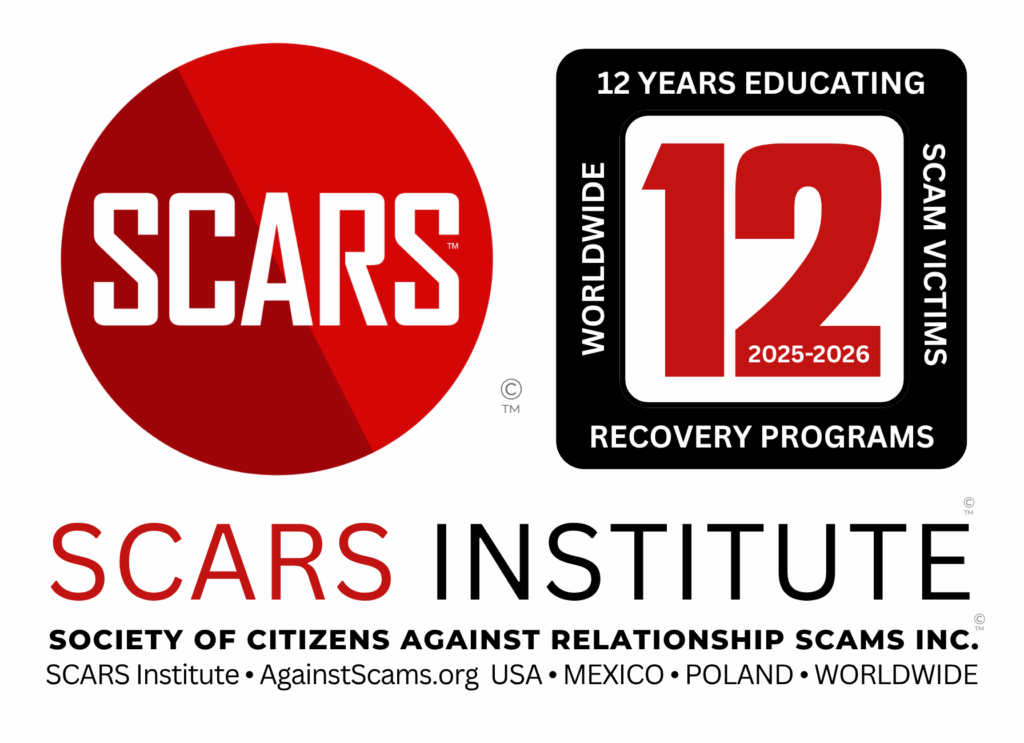











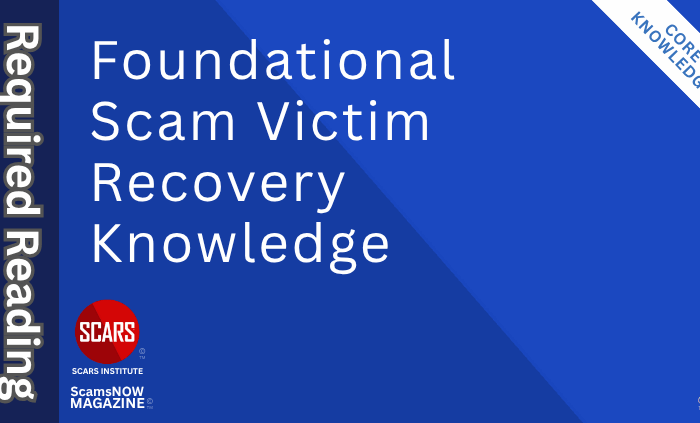

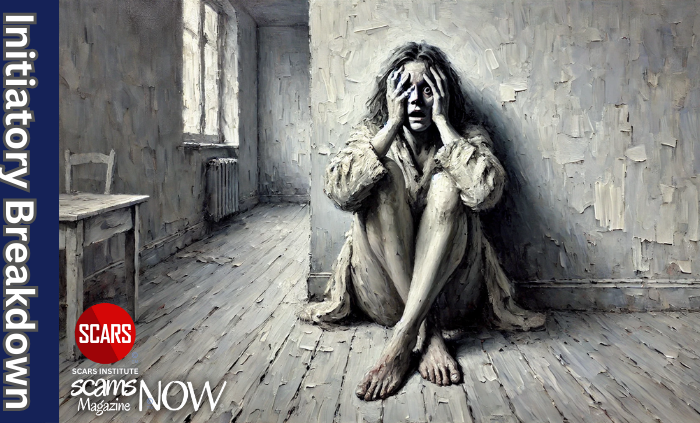
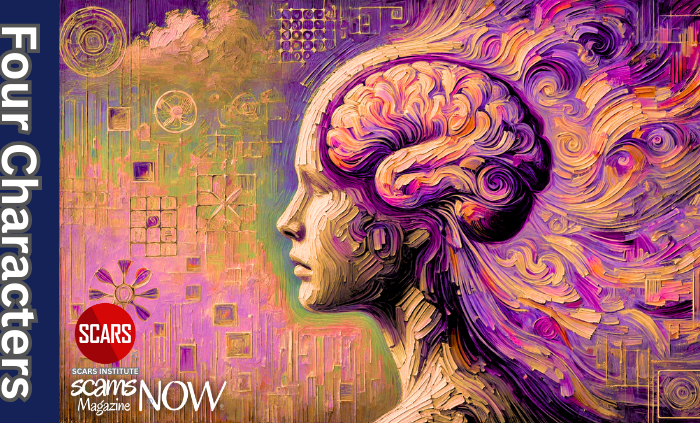



![scars-institute[1] Arts and Crafts Can Significantly Aid in Recovery for Scam Victims - 2025](https://scamsnow.com/wp-content/uploads/2025/04/scars-institute1.png)
![niprc1.png1_-150×1501-1[1] Arts and Crafts Can Significantly Aid in Recovery for Scam Victims - 2025](https://scamsnow.com/wp-content/uploads/2025/04/niprc1.png1_-150x1501-11.webp)

Right after the scam, I didn’t want to do anything. I felt defeated and ashamed—as if I had betrayed both myself and my loved ones. I believed I didn’t deserve to do anything relaxing or fun. Still, I turned to Netflix series to fill my free time because they helped me escape the painful reality and the cognitive dissonance I was experiencing.
I’ve liked painting since the covid-19 pandemic, but right after the scam, it felt daunting and overwhelming. About three months after the scam, my self-hatred began to diminish, and my responsibilities as a professor’s assistant also decreased. Not only did I start to feel more deserving of treating myself kindly, but I also had more energy and free time. That’s when I started painting again.
The first thing I painted was a little bug—a green caterpillar emerging from a hole, looking up with bright eyes. It has always been my favorite. Not just because it’s cute, but because it gives me hope. That caterpillar is gazing at something beautiful with wonder, and whatever that may be, it brings light to its eyes.
As I slowly increased the ratio of positive to negative self-talk, I started other painting projects as gifts for loved ones: bags, picture frames, decorative rocks. It felt good to complete a project. It felt good to know that I could correct a mistake in a painting, pick it up where I had left off, or simply return to it later.
Some paintings helped me release the pain I was holding in. I painted No Face in an adaptation of The Scream by Munch—it screamed for me when I couldn’t scream myself, set in a dark scene as heavy as the darkness I felt inside. Other, more colorful paintings helped me tell my story to my loved ones without using words. Now I paint things that challenge me, but they also remind me that I can face challenges—that I can strive, create, and learn.
I wish I had come across SCARS earlier—had learned about scams, about why I fell for one, and how to begin recovering. I would’ve made better use of the resources around me. Still, I’m deeply grateful for the chance to learn, and that it wasn’t too late. I highly recommend painting as part of your recovery. You don’t need to know how to paint, you just have to be willing to try.
I did not realize that things I like doing very much—knitting or sudoku—were so helpful in my recovery process. The same with coloring the pictures – did it with my small neighbor while looking after her. Attached here is “Observation Catalog: Grounding Technique for Fraud Victims,” which I find to be a very valuable tool at any stage of recovery. Sometimes it is hard to manage the flurry of thoughts and emotions.